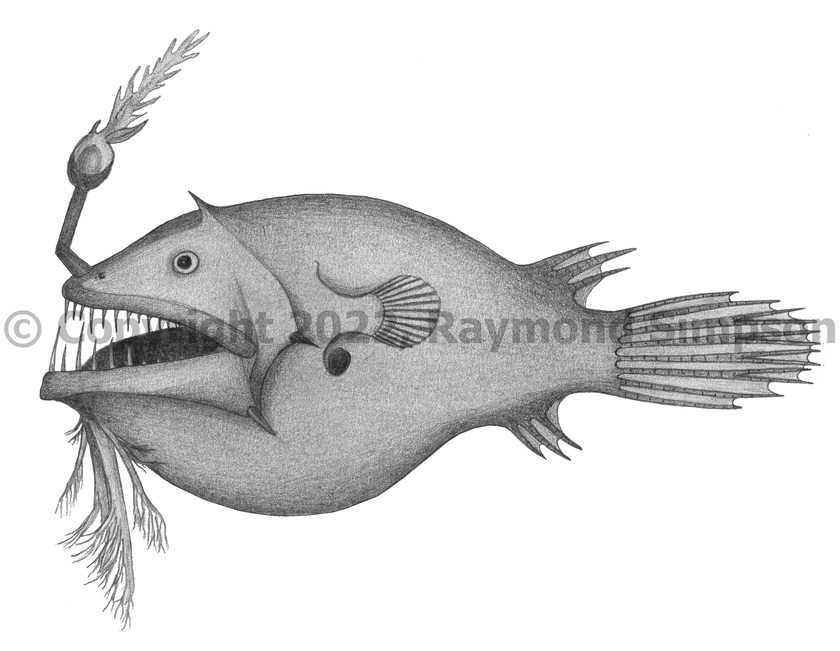
Common Name
Thickbranch Leftvent
Year Described
Imai, 1941
Identification
Dorsal Fin: 3 (rarely 4)
Anal Fin: 3 (rarely 2 or 4)
Pectoral Fin: 15-17
Caudal Fin: 2 simple + 4 branched + 3 simple (last short)
Branchiostegal Rays: 5 (rarely 4)
Females: Body nearly globular with a huge head. Mouth huge and oblique (more than a third of body length), with several rows of well spaced teeth varying from long to short. Vomer with long teeth. Head with strong sphenotic spine. Spines on quadrate and articular absent. Two strong spines on rear edge of preopercle. Illicium short but present, with pterygiophore almost completely buried in skin of head. Esca with large bulb and long (16-39% SL) distal appendage, with 8-10 lateral branches (basal pair largest). Posterior escal appendage short, compressed and fringed. No additional appendages on esca. Hyoid barbel well developed and <60% SL. Barbel is branched at base with three unpaired branches and additional secondary branching with numerous terminal filaments (giving appearance of 6 hairy branches). Pectoral fin small and inserted high on body beyond midpoint. Dorsal and anal fins far back near caudal fin base. Caudal fin has simple and branched rays. Skin completely smooth (lacks spinules, bristles, or bucklers). Vent on left side of body (unique to family).
Males: tiny and parasitic. Body elongated. Olfactory organs well developed. Barbels absent in adults. Jaw teeth present in free living males.
Color
Body dark brown to blackish. Esca, hyoid barbel, head spines, and caudal fin whitish. Esca and hyoid barbel bioluminescent.
Size
Females range from 34-71mm SL. Males range from 9-18mm SL.
Habitat
Adults taken from 300-1000m in midwater tows. Juveniles and possibly adults shallower, especially at night.
Range
Known from off eastern Florida and from the Gulf of Mexico. Widespread in all major oceans.
References
Pietsch, T.W. 2009. Oceanic Anglerfishes: Extraordinary Diversity in the Deepsea. University of California Press. 557pp.